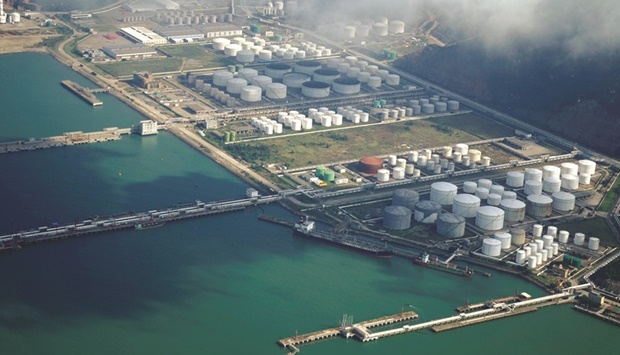Russia April Gas Exports Fall On Spot Price Drop, Warmer Weather

(Bloomberg) — Gazprom PJSC’s average daily exports to key foreign buyers so far in April fell to lowest in three months, as warmer weather and lower spot prices started to lure European clients away from Russian gas. The gas giant exported an average of 407 million cubic meters a day to countries outside the former Soviet Union in the first 15 days of April, according to Bloomberg calculations b
The gas giant exported an average of 407 million cubic meters a day to countries outside the former Soviet Union in the first 15 days of April, according to Bloomberg calculations based on a Gazprom statement published Friday. That’s nearly 18% below the daily average for the month of March. The company’s year-to-date exports to its key markets tumbled more than 26% compared to the same period of 2021 to 44.6 billion cubic meters, Gazprom said.
“Russian flows have been reduced and LNG imports strengthened in the last few days, as a result of the TTF day-ahead price falling, making spot volume prices more competitive compared to TTF-indexed Russian pipeline gas,” Rystad Energy analyst Vinicius Romano said in a research note earlier this week.
The European Union depends on Russia for 40% of the gas it consumes, which makes it challenging for the alliance to stop the purchases immediately in retaliation for Moscow’s invasion of Ukraine. However, the bloc is trying taking steps to wean itself off Gazprom supplies, with EU governments starting to assess alternative supply sources.
Moscow’s demand that so-called “unfriendly” countries pay for gas deliveries in rubles starting from April is creating additional pressure on its clients to find alternative supplies, as the Kremlin has threatened to cut off exports to buyers that refuse to comply.
Gazprom doesn’t provide a detailed export breakdown by country, making it difficult to assess supplies to Turkey and most of Europe, the key market for the company’s foreign deliveries. Russian daily flows toward the borders with European nations have averaged nearly 324 million cubic meters between April 1-12, compared with 361.5 million cubic meters per day in March, according to Gazprom data.
Gazprom said it continues to supply gas in line with requests from consumers and is in full compliance with its contractual obligations.
The EU Commission’s plan to eventually have the continent’s gas storages 90% full by the start of winter is “very ambitious,” Gazprom said in the statement. That would imply reinjections of 63 billion cubic meters, which is higher than the volume of gas stored during the warmer months in recent years and still would not cover peak demand if winter is abnormally cold, according to the Russian company.
Gazprom’s daily output between April 1-15 averaged 1.393 billion cubic meters, according to Bloomberg calculations. That’s 4.3% below the average over the whole of April 2021. Since the start of the year, the producer pumped 155.9 billion cubic meters of natural gas, down 1.3% year on year, according to Gazprom’s data.
Russia’s year-to-date domestic gas consumption declined 3.6% compared to the same period in 2021 amid warmer weather in February, Gazprom said.
— With assistance by Helen Robertson







